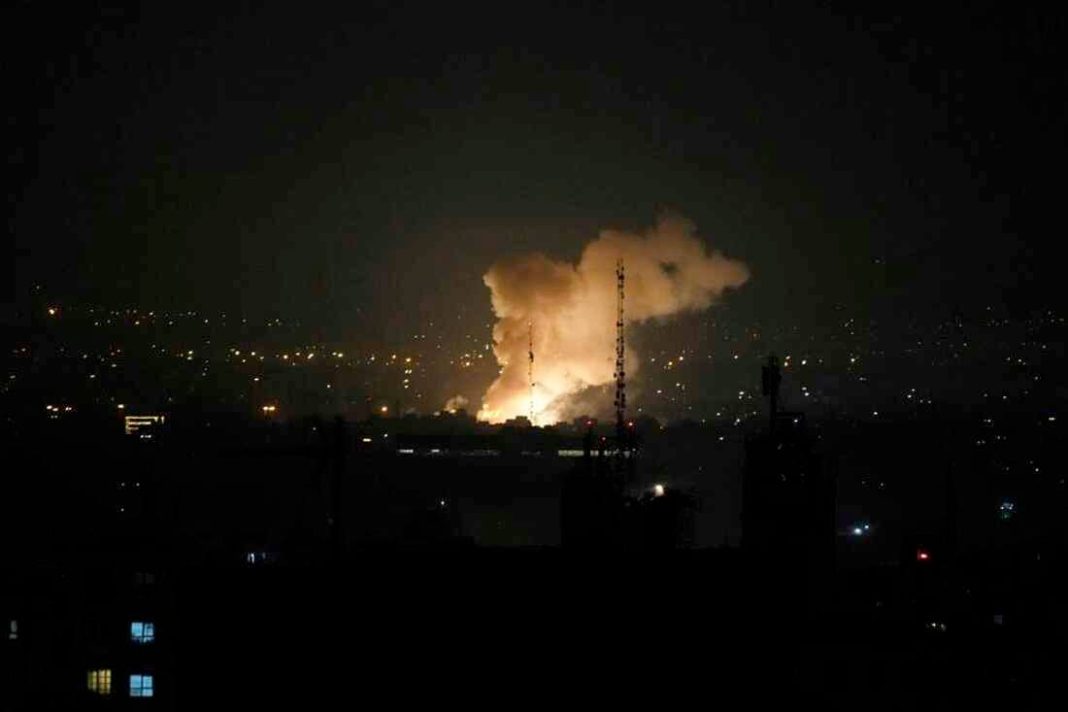
Dubai, June 13: Israel launched a blistering attack on the heart of Iran’s nuclear and military structure Friday, deploying warplanes and drones smuggled into the country to target key facilities and kill top generals and scientists — a barrage it said was necessary before its adversary got any closer to building an atomic weapon.

The operation raised the potential for all-out war between the countries and propelled the region, already on edge, into even greater upheaval.
Iran quickly retaliated, sending a swarm of drones at Israel as Supreme Leader Ayatollah Ali Khamenei warned of “severe punishment”.
Iran had been censured by the UN’s atomic watchdog a day earlier for not complying with obligations meant to prevent it from developing a nuclear weapon.
Israel had long threatened such a strike, and successive American administrations had sought to prevent it, fearing it would ignite a wider conflict across the Middle East and possibly be ineffective at destroying Iran’s dispersed and hardened nuclear programme.
But a confluence of developments triggered by Hamas’ Oct 7, 2023, attack and the election of President Donald Trump created the conditions that allowed Israel to finally follow through on its threats.
Israel had told the Trump administration that the large-scale attacks were coming, officials in the US and Israel said on condition of anonymity to describe private diplomatic discussions.
On Wednesday, the US pulled some American diplomats from Iraq’s capital and offered voluntary evacuations for the families of US troops in the wider Middle East. On Friday, the US began shifting military resources, including ships, in the region as Israel prepared for more retaliation, two US officials said.
Countries in the region condemned Israel’s attack, while leaders around the globe called for immediate deescalation from both sides. Iran asked for an emergency meeting of the UN Security Council.
Israel’s military said about 200 aircraft were involved in the initial attack on about 100 targets. Its Mossad spy agency positioned explosive drones and precision weapons inside Iran ahead of time, and used them to target Iranian air defences and missile launchers near Tehran, according to two security officials who spoke on condition of anonymity.
It was not possible to independently confirm the officials’ claims.
Among the key sites Israel attacked was Iran’s main nuclear enrichment facility at Natanz, where black smoke could be seen rising into the air. Israel also said it destroyed dozens of radar installations and surface-to-air missile launchers in western Iran.
Israel military spokesman Brig Gen Effie Defrin said the Natanz facility was “significantly damaged” and that the operation was “still in the beginning”.
Among those killed were three of Iran’s top military leaders: one who oversaw the entire armed forces, Gen Mohammad Bagheri; one who led the paramilitary Revolutionary Guard, Gen Hossein Salami; and the head of the Guard’s ballistic missile programme, Gen Amir Ali Hajizadeh.
Iran confirmed all three deaths, significant blows its governing theocracy that will complicate efforts to retaliate. Khamenei said other top military officials and scientists were also killed.
In its first response, Iran fired more than 100 drones at Israel. Israel said the drones were being intercepted outside its airspace, and it was not immediately clear whether any got through.
Israel’s military said it called up reservists and began stationing troops in “all combat arenas” throughout the country as it braced for further retaliation from Iran or Iranian proxy groups on its border.
US President Donald Trump urged Iran to reach a deal with Washington on its nuclear programme, warning on his Truth Social platform that Israel’s attacks “will only get worse”.

“Iran must make a deal, before there is nothing left, and save what was once known as the Iranian Empire,” he wrote. “No more death, no more destruction, JUST DO IT, BEFORE IT IS TOO LATE.” (AP)





